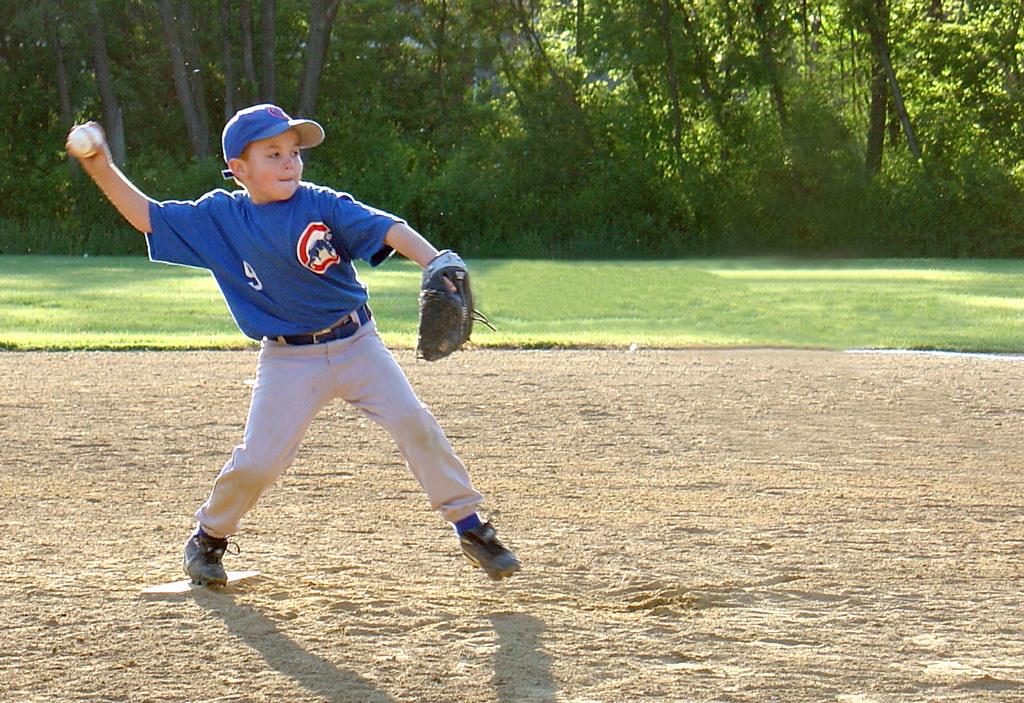
In the fast-paced world of professional sports, rules are anything but static. While we often view the regulations governing our favorite games as immutable, they are, in fact, constantly evolving. These changes, sometimes gradual and sometimes immediate, are driven by a myriad of factors: player safety, strategic innovation, enhancing entertainment value, or even a singular, controversial moment that exposes an unforeseen loophole.
Indeed, some moments in sports history become so significant that they compel entire leagues to rewrite their rulebooks. These aren’t minor seasonal adjustments; they are often dramatic shifts that happen because one game, one play, or one unforeseen controversy makes it glaringly clear that something needs to be addressed without delay. The ability of sports leagues to adapt and improve their rules based on real-game experiences is crucial, ensuring the games remain fair, safe, and entertaining for everyone involved.
Rules in sports are more than just boundaries; they profoundly shape the very way games are played, watched, and remembered. From safety regulations that protect athletes to scoring adjustments that ignite fan excitement, these pivotal shifts leave lasting marks on the sporting world. We’re about to take a deep dive into 13 such monumental rule changes, exploring how many of them, just over a decade ago, were either non-existent or radically different, fundamentally altering the competitive landscape forever.

1. **The Forward Pass in American Football**Imagine American football as a brutal, run-heavy sport, dominated by mass formations and violent collisions that frequently led to serious injuries and even fatalities. This was the reality in the early 1900s, prompting concerns from figures like Teddy Roosevelt. It was within this context that the forward pass was legalized in 1906, not as a tactical revolution but primarily as part of broader safety reforms aimed at reducing dangerous pileups and spreading players out across the field.
Initially, this groundbreaking rule wasn’t immediately embraced. The forward pass was heavily restricted; an incomplete pass often resulted in a turnover or a significant penalty, and passing beyond certain zones was illegal. These limitations, coupled with the game’s entrenched running culture, meant it took years for coaches to truly experiment with aerial strategies. The real turning point came in 1913 when Notre Dame’s Gus Dorais and Knute Rockne famously used the forward pass to dismantle Army, a game that opened the eyes of football strategists to its immense potential.
Over the decades, improvements to the rules, such as allowing passes from anywhere behind the line of scrimmage and removing severe penalties for incompletions, made passing a much more practical and attractive option. By the mid-20th century, legendary quarterbacks like Johnny Unitas and Joe Namath proved that the forward pass could be the centerpiece of an offense, not just a trick play. Today’s NFL, with its prolific quarterbacks and high-scoring offenses, is a direct descendant of that once-radical rule change over a century ago, transforming football from a slow, grinding contest into a faster, more strategic, and spectator-friendly sport.
Read more about: Beyond Instinct: 14 Cutting-Edge Ways Pro Athletes Engineer Victory Through Data Analytics
2. **The Shot Clock in Basketball**It’s hard to imagine basketball without the constant ticking of the shot clock, but there was a time when this vital component of the game did not exist. In the early decades of the sport, particularly in the 1940s and early 1950s, teams with a lead often resorted to stalling tactics, endlessly passing the ball to run down the game clock. This approach was not just defensive; it made for an incredibly dull spectacle, leading to frustratingly low-scoring games and disillusioned fans. The absolute tipping point arrived in 1950 during an infamous game between the Fort Wayne Pistons and the Minneapolis Lakers, which concluded with an astonishing final score of 19–18.
The revolutionary solution emerged in 1954, when the NBA introduced the 24-second shot clock. The concept was elegantly simple: once a team gained possession, it had precisely 24 seconds to attempt a shot that would hit the rim. Failure to do so would result in a turnover, with the opposing team gaining possession. Danny Biasone, then owner of the Syracuse Nationals, is largely credited with this invention. He calculated that the most exciting games averaged about 120 shots total, and dividing the game time by that number produced the optimal 24-second limit.
The impact of the shot clock was immediate and profoundly dramatic. Scores soared, the pace of the game quickened considerably, and basketball transformed into a fast, dynamic sport that captivated fans from start to finish. The shot clock effectively eliminated stalling tactics, instead rewarding teams that could think and execute their plays with speed and precision. Over time, other leagues adopted the concept, with variations in the time limit, such as FIBA and the WNBA using 24 seconds, while college basketball employs 30 seconds. Even in the NBA, the rule has evolved, with offensive rebounds now resetting the clock to 14 seconds, further increasing the tempo and excitement. This rule didn’t just change how basketball was played; it fundamentally reshaped its very identity.
Read more about: Beyond the Court: Unpacking the ‘Simple Tricks’ That Fuel LeBron James’s Enduring Peak Physicality at 40
3. **The Three-Point Line in Basketball**For many contemporary basketball fans, the three-point line is an intrinsic, always-present feature of the game, a vital strategic element that defines offensive play. Yet, the NBA only officially adopted the three-point line in the 1979–80 season, borrowing the innovative idea from the upstart American Basketball Association (ABA). Interestingly, its initial impact was quite modest; coaches and players in the early days still predominantly relied on post play and mid-range jumpers, treating the three-pointer as a situational weapon rather than a core strategic element.
The original intent behind the rule was clear: to spread the floor, open up driving lanes, and ultimately create more excitement for fans by incentivizing longer-range shots. It took time, but the rule eventually achieved its purpose. As teams gradually began to realize the significant mathematical advantage of scoring three points instead of two on a single shot, offensive strategy slowly but surely evolved. By the 1990s, sharpshooters like Reggie Miller and Glen Rice demonstrated how a truly deadly outside shooter could fundamentally alter the flow and outcome of an entire game, forcing defenses to extend beyond the paint.
The true explosion in three-point shooting, however, came in the 2010s, heavily influenced by advanced analytics and the groundbreaking success of teams like the Golden State Warriors. They unequivocally proved that an offense built around high-volume, high-efficiency three-point shooting could dominate even at the highest level of professional basketball. This strategic shift compelled defenses to adapt dramatically, stretching them farther from the basket and, paradoxically, opening up even more space for faster, more dynamic offensive play. Today, the three-point line is not just a feature of the court; it is a central pillar of basketball strategy, influencing player development and coaching philosophies across all levels of the sport.
Read more about: Beyond Instinct: 14 Cutting-Edge Ways Pro Athletes Engineer Victory Through Data Analytics

4. **Video Replay in Multiple Sports**For the vast majority of sports history, the calls made by referees and officials were considered final, regardless of their accuracy. Fans could argue, and players could protest vigorously, but once a decision was rendered, there was no mechanism to revisit or correct it. This began to change significantly in the late 20th century as technology advanced, introducing one of the most transformative tools in modern sports officiating: video replay, which fundamentally altered the landscape of fairness and accuracy on the field or court.
The earliest formal experiments with video replay appeared in the NFL during the mid-1980s, where coaches were given the ability to challenge certain calls, thereby triggering an official review. While this initial system was often clunky, slow, and sometimes prone to controversy itself, it unmistakably set the crucial stage for broader adoption across various sports disciplines. Other leagues quickly followed suit: tennis incorporated Hawk-Eye technology in 2006, empowering players to challenge line calls with precision; cricket adopted its comprehensive Decision Review Systems (DRS); soccer implemented the Video Assistant Referee (VAR) to meticulously check goals, penalties, and red cards; and rugby integrated Television Match Officials (TMO) to aid in crucial decision-making.
The paramount strength of video replay lies in its undisputed ability to correct clear and obvious mistakes that can significantly influence a game’s outcome. A game-winning touchdown, a last-second three-pointer, or a hotly disputed goal can now be verified with remarkable precision, helping to ensure that the final result is based on objective facts rather than a human official’s missed call. This has been instrumental in preserving the integrity of competition and fostering greater trust among fans regarding the fairness of results. Despite its undeniable benefits, replay hasn’t been without controversy, with critics citing game slowdowns, disruption of momentum, and occasionally, still inconclusive results. Nevertheless, it has fundamentally changed the relationship between sports, technology, and justice on the playing field.
Read more about: The Definitive Guide: 10 Top Golf Swing Analysis Apps Trusted by Pros for Peak Performance

5. **The Introduction of the Tie-Break in Tennis**Before the advent of the tie-break, tennis matches had the potential to stretch on endlessly, creating grueling spectacles for both players and spectators. In the sport’s early days, a player was required to win by a margin of two games to secure a set, regardless of how many games it took to achieve that differential. This rule frequently led to marathon sets, which, while sometimes epic, were physically exhausting for the athletes and often tested the patience of the audience, sometimes dragging into double-digit scores on both sides.
The impetus for change gained significant momentum in the late 1960s, largely spearheaded by James Van Alen, an American tennis enthusiast who firmly believed the sport needed a faster, more television-friendly format to appeal to a wider audience. Van Alen ingeniously introduced the concept of a sudden-death “tie-breaker” designed specifically to prevent excessively long sets while simultaneously maintaining, and even heightening, the tension. His innovative format was first trialed at the 1970 US Open, where players competed in a nine-point tie-break, with the first to five points winning, needing to win by one.
The initial reaction to the tie-break was decidedly mixed; traditional purists argued that it disrupted the established rhythm and long-standing traditions of tennis, while others enthusiastically praised the added excitement and the perceived fairness of a decisive end. Over time, the system evolved into the more familiar 12-point tie-break (first to seven points, win by two) that is now the standard in the vast majority of professional matches worldwide. The tie-break has not only successfully kept matches within reasonable time limits but has also injected an unparalleled level of drama into the sport. Every single point carries immense weight, and momentum can swing rapidly, creating legendary moments like John McEnroe’s epic tie-break win over Björn Borg in the 1980 Wimbledon final. It is a change that transformed the pacing and intensity of matches, making it one of the most influential rule changes in tennis history.
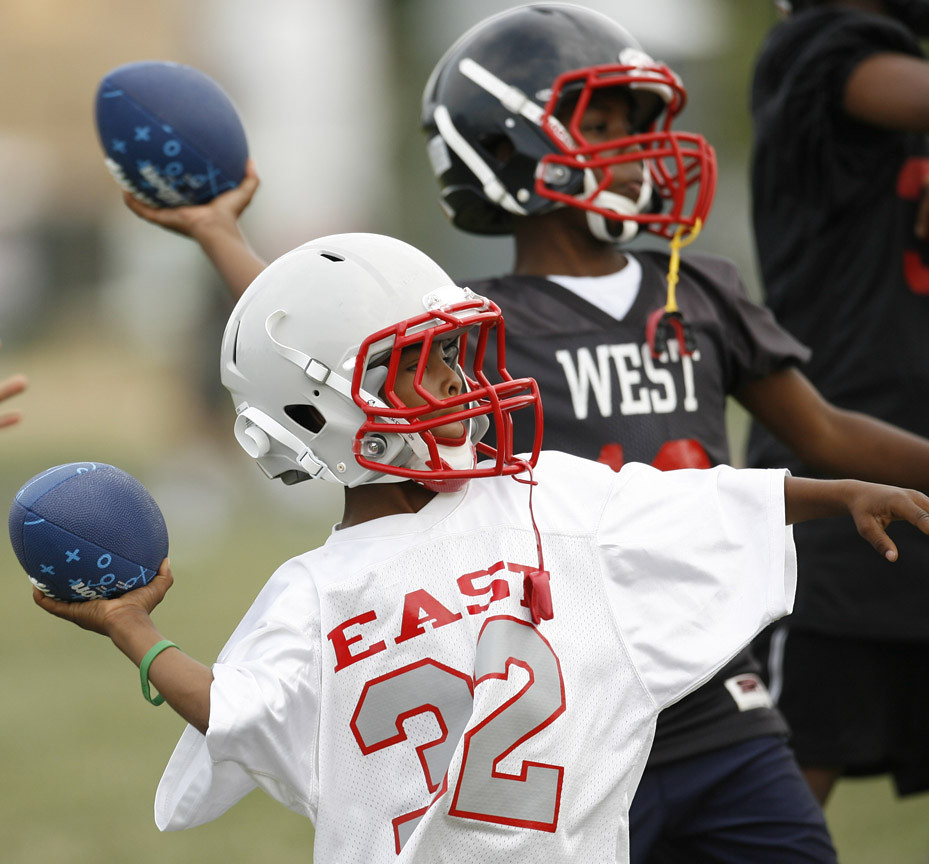
6. **The Roy Williams Horse-Collar Rule (NFL)**In the high-speed, high-impact world of the NFL, defensive players are constantly looking for effective ways to bring down powerful offensive threats. However, some methods proved to be not only effective but incredibly dangerous. Dallas Cowboys safety Roy Williams became notoriously known for his habit of tackling runners by grabbing the back of their shoulder pads or the inside of their jerseys and yanking them down. This technique, while visually effective in stopping plays, created a severe risk of devastating lower-body injuries, particularly to the knees and ankles, as players were twisted unnaturally to the ground.
Williams’s use of this method led to several injuries to opposing players. A particularly nasty and high-profile incident occurred in 2004 when he injured Eagles running back Terrell Owens using the horse-collar tackle. The controversy surrounding this dangerous play was so intense and the injury risk so evident that the NFL took swift and decisive action. Following the 2004 season, the league completely banned the horse-collar tackle. The rule specifically prohibits grabbing the inside collar of the shoulder pads or jersey and yanking players down from behind, aiming to protect players from potentially career-ending injuries.
The implementation of the horse-collar rule stands as a clear example of how a single player’s actions, and the dangerous consequences thereof, can directly inspire a critical rule change for the greater good of player safety across the entire league. It demonstrated the NFL’s commitment to mitigating unnecessary risks, even when it meant altering a previously legal, albeit hazardous, tackling technique. This rule, inspired by Roy Williams’s distinctive—and ultimately banned—style, has undoubtedly contributed to a safer playing environment, ensuring that athletes are protected from such potentially devastating impacts.

7. **The Mel Gray Rule (NFL)**In the unpredictable world of NFL special teams, Detroit Lions return specialist Mel Gray provided a moment of sheer ingenuity—or perhaps, audacious rule exploitation—in 1975. After catching a punt, Gray signaled for a fair catch, a common procedure that prevents defenders from hitting the returner and typically makes the play dead at the spot of the catch. However, Gray did not stop; instead, he continued running with the ball.
Remarkably, the referees on the field did not blow the whistle, and Gray successfully took the ball all the way for an unexpected touchdown. This incredible play instantly exposed a glaring loophole in the NFL’s rulebook. The regulations at the time did not explicitly state that a player who signaled for a fair catch *could not* advance the ball if the whistle wasn’t blown.
The league recognized this massive oversight almost immediately. In a swift and decisive response, the NFL implemented a new rule: any player who signals for a fair catch is strictly prohibited from advancing the ball under any circumstances. Mel Gray’s clever maneuver, driven by an unclear wording in the existing rules, led to one of the most straightforward and fundamental changes in football history, ensuring that a fair catch signal truly means the end of a return opportunity.
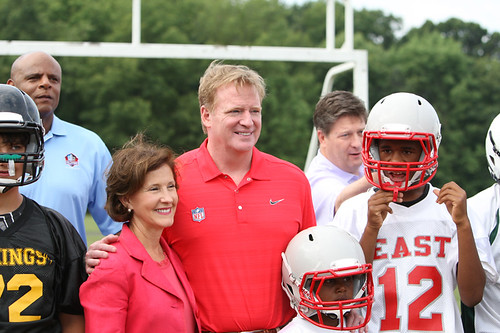
8. **The Hail Mary Interference Ban (NFL)**The 1979 NFC Championship game between the Dallas Cowboys and the Los Angeles Rams became etched in NFL lore not just for its outcome, but for a highly controversial play that directly influenced a rule change. In a crucial moment, Cowboys receiver Drew Pearson made what appeared to be a game-winning touchdown catch. However, replays and widespread opinion suggested that Pearson had clearly pushed off Rams defender Nolan Cromwell before securing the ball.
Despite the blatant nature of the push-off, the officials on the field did not throw a flag for offensive pass interference. This non-call directly contributed to the Cowboys’ victory and sparked an intense debate across the league and among fans. The perception was that a receiver had “bulldozed” his way to a catch in a critical situation without being penalized, undermining the spirit of fair play.
The incident was so visibly obvious and contentious that the NFL took immediate action to address the issue. They moved to clarify and significantly strengthen the rules governing offensive pass interference. The updated regulations made it explicitly clear that receivers could not use physical force or illegal contact to gain an advantage over defenders, even in high-stakes, game-deciding plays. This adjustment helped restore defensive players’ ability to cover without unwarranted interference and ensure fair competition for possession.
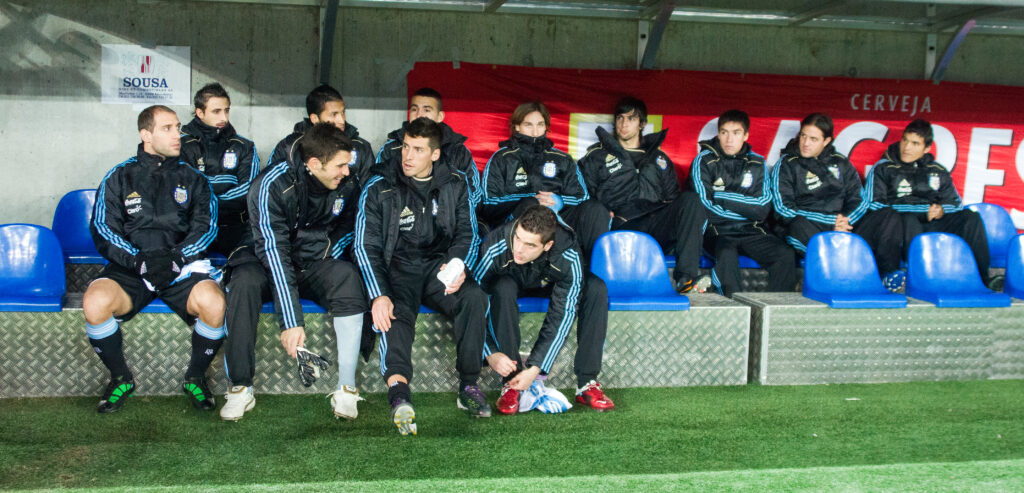
9. **The Tuck Rule (NFL)**The “tuck rule” gained widespread notoriety during a memorable 2001 AFC Divisional Playoff game between the New England Patriots and the Oakland Raiders, but its origins actually trace back to an earlier incident. The rule was specifically formalized after a play involving then-New York Jets quarterback Vinny Testaverde during a 1999 game against the Patriots. Testaverde appeared to fumble the ball while attempting to bring it back toward his body after initiating a throwing motion.
In that 1999 scenario, officials made a ruling based on an obscure interpretation of existing guidelines: they deemed Testaverde’s apparent fumble an incomplete pass. This decision highlighted an ambiguity in the rulebook regarding the precise moment a quarterback’s throwing motion concludes and when he becomes a runner. The NFL, seeking clarity and consistency, decided to formalize this interpretation into an official rule.
The formalization became known as the ‘tuck rule,’ stating that if a quarterback starts a forward-throwing motion and then loses control of the ball while attempting to “tuck” it back toward his body, it should be ruled an incomplete pass rather than a fumble. This interpretation effectively provided an additional layer of protection for quarterbacks, treating these specific instances as non-advancing pass attempts rather than live ball turnovers.
The rule, despite its clear intention, often led to intense debate, especially given its famous application in the Patriots-Raiders playoff game which had significant implications for the game’s outcome. It epitomized how a seemingly minor clarification could dramatically alter the flow and result of critical contests, making it one of the most talked-about and controversial rules in modern NFL history until its eventual repeal.

10. **The Calvin Johnson Catch Rule (NFL)**Few plays have sparked as much debate and confusion in recent NFL history as the infamous “Calvin Johnson Catch” during a 2010 game between the Detroit Lions and the Chicago Bears. Johnson, a perennial Pro Bowl wide receiver known for his incredible hands, appeared to secure a game-winning touchdown catch in the closing moments. He controlled the ball, took a step, and then, as he went to the ground, the ball came loose for a split second.
Despite having seemingly made a “football move” and having clear control for an extended period, the officials ruled that Johnson had not maintained possession through the “entire catching process” as he hit the ground. The play was deemed an incomplete pass, denying the Lions a crucial victory. The ensuing controversy ignited a league-wide discussion about the often-convoluted definition of what truly constitutes a legal catch in the NFL.
The intensity of this debate, fueled by countless similar incidents and inconsistent rulings over the years, compelled the NFL to undertake a multi-year effort to clarify the catch rule. After extensive reviews and discussions, the league eventually simplified the language to focus on three core elements: control of the ball, two feet or another body part down, and a “football move” — which includes moving the ball, extending to the goal line, or warding off a defender. The emphasis shifted away from the ambiguous notion of “surviving contact with the ground.”
This clarification aimed to eliminate the subjective interpretations that plagued officials and frustrated fans for years, particularly around the “going to the ground” aspect. The Calvin Johnson play became a prime example of a situation where an athlete’s seemingly brilliant effort was negated by a rule that many felt defied common sense. The subsequent simplification was a direct response to such contentious moments, striving for greater consistency and understanding in a fundamental aspect of the game.

11. **Lenny Randle And Foul Balls (MLB)**In baseball, a ground ball hit down the third baseline can present a unique dilemma for a third baseman. If the ball stays fair, it’s a live play; if it rolls foul, it’s a dead ball. Often, when a ball is slowly tracking toward the foul line, the fielder’s best option is to let it roll, hoping it crosses into foul territory without being touched. However, in a 1981 game, Seattle Mariner Lenny Randle introduced a novel, and ultimately illegal, method of influencing such a play.
As a slow-rolling ball trickled down the third baseline, Randle, in an incredibly unorthodox move, got down on his hands and knees. Instead of letting the ball take its natural course, he attempted to blow on it, hoping to push it into foul territory. His intention was to manipulate the ball’s trajectory without actually touching it with his hands or glove, believing he was operating within a technicality.
Major League Baseball, however, was quick to address this unprecedented display of gamesmanship. The league swiftly implemented a new rule that explicitly prohibited a player from changing the path of a ball they were not actually touching. Randle’s peculiar attempt to ‘breathe’ a ball foul showcased a gap in the rulebook that needed immediate attention, leading to a clear directive about players’ interactions with live or rolling balls, reinforcing the principle that physical contact is typically required to affect play.
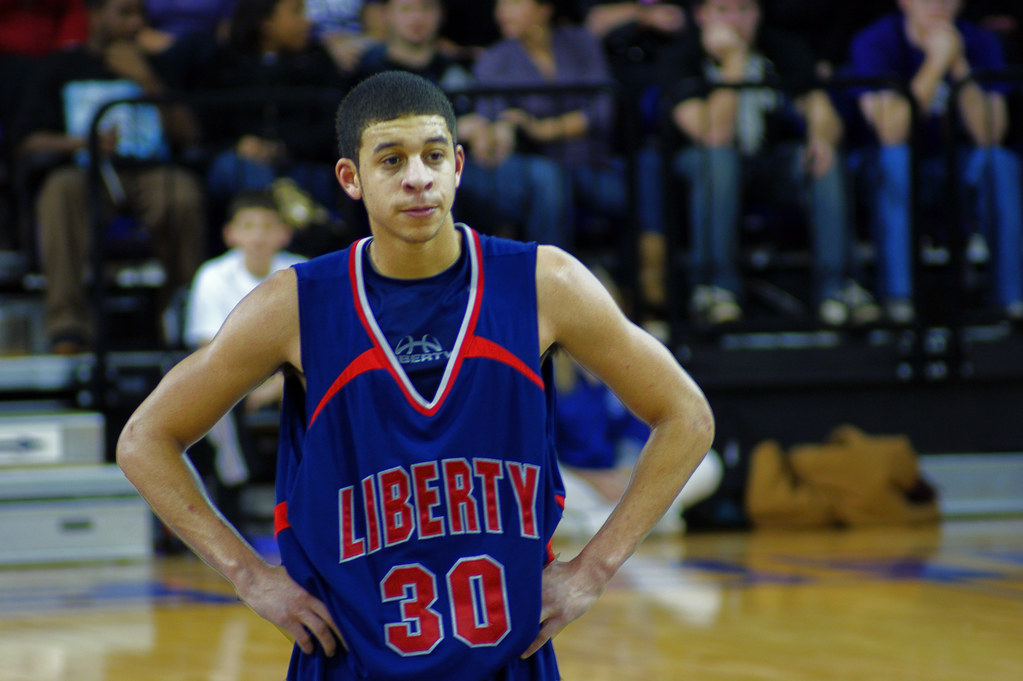
12. **The Pete Carroll Timeout Freeze (NCAA)**College football has long been a stage for intense psychological battles, none more captivating than those surrounding crucial field goal attempts. In a pivotal 2006 game, then-USC coach Pete Carroll employed a tactic that pushed the boundaries of gamesmanship, creating significant controversy. Just as the opposing kicker began his approach to attempt what would be a decisive field goal, Carroll dramatically called a timeout.
The timing of the timeout was so late that the kicker had already started his motion, raising immediate confusion about whether the attempt should count, be replayed, or simply be ignored. While technically within the rules to call a timeout, the intent was clearly to disrupt the kicker’s concentration and rhythm at the last possible second, effectively “freezing” him mentally and physically. This type of tactic had become increasingly common in high-pressure situations.
Recognizing the disruptive and potentially unfair nature of such last-second interruptions, college football responded decisively. The NCAA implemented what is now widely known as the ‘freeze’ rule, or more formally, a regulation that prevents coaches from calling timeouts once the kicking team has initiated their approach. This rule change was designed to eliminate this particular brand of psychological gamesmanship, ensuring that kickers could attempt their crucial plays without such intentional, disruptive interference, and upholding the integrity of the critical kicking sequence.

13. **Kareem Abdul-Jabbar And Slam Dunks (NCAA)**Before he was known as Kareem Abdul-Jabbar, Lew Alcindor was an unstoppable collegiate force for UCLA basketball in the late 1960s. Standing at an imposing 6-foot-10, Alcindor dominated opponents with an unprecedented blend of skill, athleticism, and sheer physical presence. His signature move, the slam dunk, was deployed with such regularity and effectiveness that it became a cornerstone of UCLA’s record-breaking success, propelling them to three consecutive national championships.
Alcindor’s dominance, particularly his ability to score at will with the dunk, created a significant challenge for the NCAA. The organization felt that his unparalleled height and skill, often culminating in effortless dunks, gave UCLA an insurmountable advantage and potentially made the game less competitive for others. In an unusual and controversial move, the NCAA attempted to curb this dominance, seemingly targeting Alcindor directly.
In 1967, the NCAA officially banned the dunk shot, a rule that famously remained in place for a decade. The intent was clearly to level the playing field, forcing Alcindor and other tall centers to develop other offensive skills. However, the ban proved largely ineffective in stopping UCLA’s dynasty. Alcindor adapted, perfecting his skyhook and mid-range game, and the Bruins continued their winning ways. The “Alcindor Rule,” as it was informally known, stands as a testament to one player’s impact on the sport and an organization’s ultimately futile attempt to legislate away individual greatness.
**How One Game (Or One Player) Changes Everything**
As we’ve traversed through these pivotal rule changes, it becomes abundantly clear that sports are not static. They are living, breathing entities, constantly adapting to the ingenuity of athletes, the exigencies of safety, and the demands of fair play. From Mel Gray’s audacious fair catch scam to Lew Alcindor’s dunk-driven NCAA ban, each adjustment, whether born from a single moment of controversy or a player’s groundbreaking technique, fundamentally reshapes the landscape of competition.
These modifications, often implemented with surprising speed, highlight the dynamic relationship between players, officials, and the governing bodies of sports. They underscore how a singular play can expose a critical loophole, a dangerous act can prompt a necessary safety measure, or an athlete’s unmatched dominance can challenge the very framework of the game. The commitment of leagues to adapt and improve ensures that our beloved sports remain fair, safe, and, most importantly, continuously thrilling for everyone involved.
It’s a powerful reminder that while the athletes on the field make history with their physical feats, the rules off the field are often the quiet architects, continually redesigning the blueprint of what’s possible and what’s permissible in the pursuit of sporting glory.




